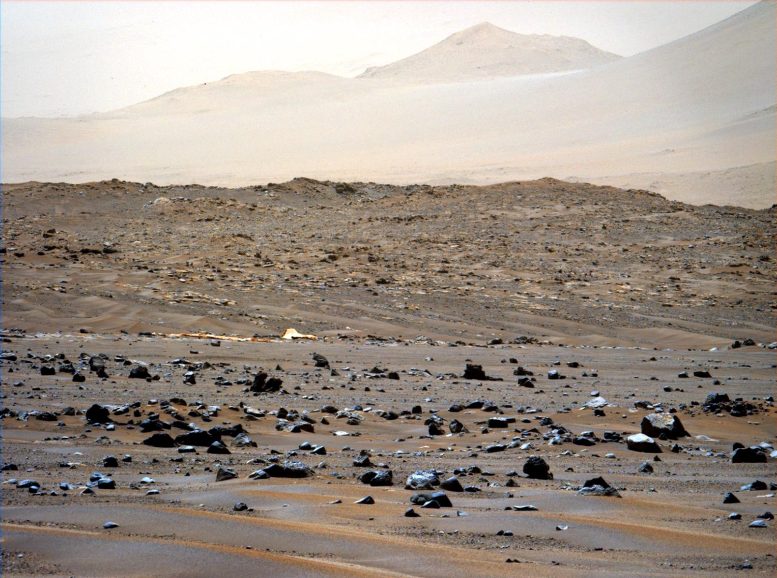Animation of the Perseverance Rover driving on Mars. NASA/JPL-Caltech
Collecting samples as it explores an ancient and now-dry river channel is but one goal the six-wheeled geologist will pursue during its second Red Planet exploration.
After collecting eight rock-core samples from its first science campaign and completing a record-breaking, 31-Martian-day (or sol) dash across about 3 miles (5 kilometers) of
Jezero Crater’s Delta Is Getting Closer: The expanse of Jezero Crater’s river delta is shown in this panorama of 64 stitched-together images taken by the Mastcam-Z system on NASA’s Perseverance Mars rover on April 11, 2022, the 406th Martian day, or sol, of the mission. Credit: NASA/JPL-Caltech/ASU/MSSS
The delta, a massive fan-shaped collection of rocks and sediment at the western edge of Jezero Crater, formed at the convergence of a Martian river and a crater lake billions of years ago. Its exploration tops the Perseverance science team’s wish list because all the fine-grained sediment deposited at its base long ago is the mission’s best bet for finding the preserved remnants of ancient microbial life.
Using a drill on the end of its robotic arm and a complex sample collection system, Perseverance is gathering rock cores for return to Earth – the first part of the Mars Sample Return campaign.
“We’ve been eyeing the delta from a distance for more than a year while we explored the crater floor,” said Ken Farley, Perseverance project scientist at Caltech in Pasadena. “At the end of our fast traverse, we are finally able to get close to it, obtaining images of ever-greater detail revealing where we can best explore these important rocks.”

Perseverance Views Its Parachute: This image of the parachute that helped deliver NASA’s Perseverance Mars rover to the Martian surface was taken by the rover’s Mastcam-Z instrument on April 6, 2022, the 401st Martian day, or sol, of the mission. Credit: NASA/JPL-Caltech/ASU/MSSS
Sticking a Fork in Three Forks
The Delta Front Campaign kicked off Monday, April 18, with about a week’s worth of driving to the southwest and then west. One goal of this excursion is to scope out the best route to ascend the delta, which rises about 130 feet (40 meters) above the crater floor. Two options, called “Cape Nukshak” and “Hawksbill Gap,” look traversable. The science team is leaning toward Hawksbill Gap because of the shorter drive time needed to reach the top of the delta, but that may change as the rover acquires additional information on the two options.
Whichever route Perseverance takes to the plateau atop the delta, the team will perform detailed science investigations, including taking rock core samples, on the way up, then turn around and do the same thing on the way back down. The rover is expected to collect around eight samples over about half an Earth year during the Delta Front Campaign.
After completing the descent, Perseverance will, according to current plans, again ascend the delta (perhaps via the other, untraveled route) to begin the “Delta Top Campaign,” which will last about half an Earth year as well.
AutoNav Drives Perseverance Forward: Video taken by NASA’s Perseverance Mars rover shows some of the terrain the rover had to negotiate during its drive to the delta at Jezero Crater in April 2022. Credit: NASA/Read original article here
